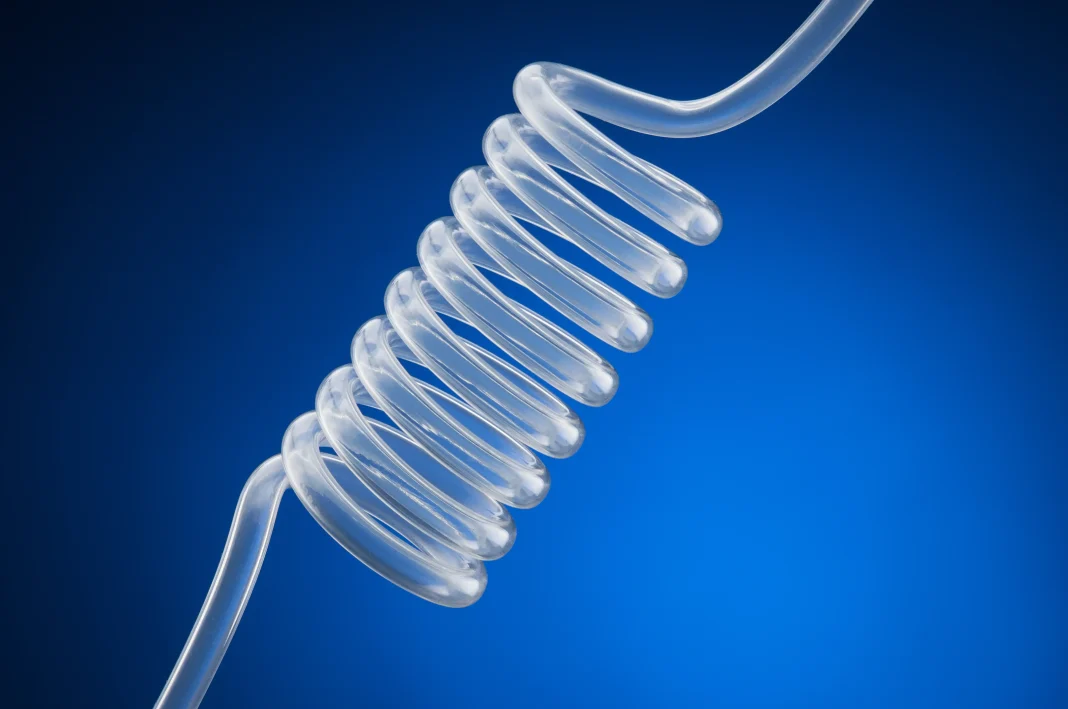Samantha Deverell, managing director, Adtech Polymer Engineering
In an increasingly regulated and safety-conscious world, the threat of contamination is ever growing. As a result, UV sterilization equipment is becoming more and more important for the medical, pharmaceutical, and food and drink industries. Used to help disinfect drinking water, sterilize food contact surfaces and hospital equipment, and diagnose a range of medical conditions, fluoroethylene propylene (FEP) is variable in production of components for UV sterilization equipment.
FEP for UV sterilization
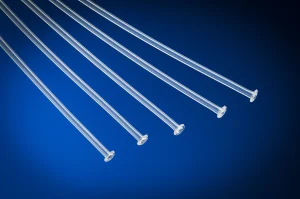
Given the high strength of ultraviolet rays, most polymers are not suited to UV sterilization. Various polymers have been tried over the years, and most general-purpose polymers were found to be useless. These polymers absorb the strong light, age with each dose of UV radiation and are damaged by the ultraviolet rays, becoming discolored and brittle.
The most successful polymers for UV sterilization have proved to be fluoropolymers containing high amounts of -CF2 and -CF3 in their molecule chain, and the very best appear to be the completely fluorinated polymers.
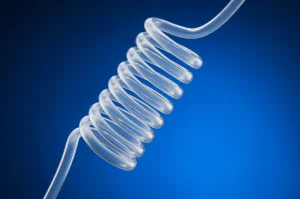
Fluoroethylene propylene (FEP) is inert to ultraviolet rays and has a low absorption rate for UV. The fluoropolymer is nonstick, bio-compatible, sturdy, and has a high tensile strength able to withstand high temperatures of +200°C and low temperatures of -200°C. As such, FEP does not become degraded by the heat or ultraviolet rays emitted by the lamps and does not brittle or discolor when used with the strong light over time. The fluoropolymer also outlasts the life of UV lamps.
In terms of light transmittance, FEP is comparable to quartz. Their refractive indices are 1.344 for FEP and 1.553 for quartz. But while quartz needs to be handled carefully and can easily be damaged, FEP is strong and durable, and when coated onto lamps, can make them shatterproof. All in all, FEP is the ideal material to produce components for UV sterilization equipment.
Minimal degradation in UV-C transmittance of fluoropolymers
UV lamp manufacturer Light Sources conducted a research on the aging of fluoropolymer heat shrink sleeves used on UV-C lamps. The main objective was to understand the long-term change in transmission of fluoropolymer heat shrink exposed to intense UV-C radiation. As part of this research, Adtech Polymer Engineering’s FEP heat shrink sleeve was tested.
In research, various FEP and PFA heat shrink sleeves were tested on different UV lamps of different power levels, from amalgam to 400 mA and 800 mA lamps. The lamps were operated for up to 8,000 hours, which accounts for half the average lifetime.
The research found fluoropolymer heat shrink sleeves minimally degrade after 8,000 hours. The UV-C transmittance degradation amounted to approximately 3 to 7% on amalgam lamps and 0 to 3% on standard and high output lamps. The research also found that the power density affects degradation. For amalgam lamps, degradation is accelerated by the additional heat and the increased UV-C rays.
While the test was only carried out for 8,000 hours, the research showed that the UV-C transmittance degradation leveled off to an approximately linear rate after 2,000 hours, and thus doesn’t expect further degradation is not expected for the remainder of the lifetime of the lamp. No aging difference was found between the use of FEP or PFA material.
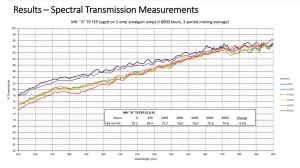
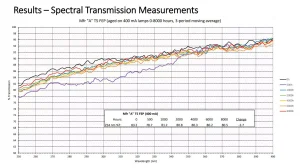
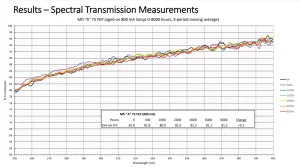
Nominal loss in UV-A transmission of fluoropolymers
Fluoropolymer manufacturer Adtech Polymer Engineering conducted a test on the transmittance of fluoropolymer heat shrink sleeves used on UV-A lamps. Widely used for electronic insect traps in the pest control market, UV-A lamp coatings allow glass and mercury to be safely contained when breakage occurs.
The aim of this study was to measure the loss in UV-A transmission of fluoropolymer heat shrink. As part of this research, Adtech’s FEP heat shrink sleeves were tested by the National Radiological Protection Board in the United Kingdom.
The following test method was developed. A standard cylindrical UV-A lamp was mounted in a holder and a calibrated UV radiometer mounted with its sensing head 25 mm from the surface of the lamp. As the output of UV lamps varies significantly over time, the research deemed it important to use one lamp for all tests and not turn the lamp off in between testing sessions.
Coatings were removed from lamps and reapplied to the standard lamp by making a join on the lamp opposite to the sensor head. The various coatings were quickly applied and removed this way, yet the lamp remained on and the sensor and the lamp did not move from their relative positions.
Readings were taken as one minute total dose of UV-A, made alternatively on the various samples. This was repeated six times, including with the lamp uncovered as a control measure. The results of the test indicate that a single sample of FEP heat shrink coating with a 0.25 mm thickness causes a loss of approximately 3 to 4% of UV-A transmission, while two samples of coating equating a nominal thickness of 0.5 mm caused approximately 7.5% loss of UV-A.
FEP products used in UV sterilization applications
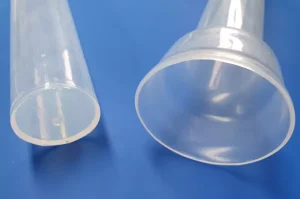
Used to deliver liquids either in front or around UV-C lamps to sterilize their content – as well as to cover UV lamps, making them shatterproof and ensuring compliance in glass free environments – FEP products play a crucial role in providing a safe environment.
Mostly used in UV sterilization equipment, FEP tubes and FEP heat shrink sleeving are available in many sizes and in different wall thicknesses. Using thermoforming technology, FEP retractable coils are formed from a range of FEP tubes and specialist fittings can be added. Where the application allows, a 0.25 mm thick coating is recommended, as it gives the best transmission performance.
In addition, UV lamp coatings cover UV-C sterilization lamps, UV-A insect lamps and fluorescent lamps in all lamp configurations, from straight to compact, circline and tight U-bend styles. Lamp coatings allow glass and mercury to be safely contained when breakage occurs and ensure lamps are IEC61549 compliant.
Custom-formed FEP tube used for UV-C lamp coating
Adtech Polymer Engineering worked with a UV-C sterilization customer to create a custom UV-C lamp cover. The coating needed to follow strict criteria to fit the application precisely and meet the requirements for electronics submerged under water. Given it was used in a UV-C sterilization application, the material used for the UV-C lamp cover needed to be inert to ultraviolet rays and allow a good transmission rate. The coating also needed to be a nominal thickness of 1.5 mm to meet the electrical compliance requirements.
To cover the lamp and meet the project criteria, a custom formed non-shrink FEP tube was created to be push-fitted over the UV-C lamp. The tube cover was easy to apply as part of the customer’s production process. In addition, the cover created a tight seal over the lamp, thus preventing leaks when the component was submerged under water.
For this project, FEP was chosen as it is inert to ultraviolet rays, does not become brittle or discolored over time and does not affect the output of the lamp. To fit the application precisely, the tube was formed with a flat tip at one end of the component and a pre-formed collar section at the open end.
Custom-flanged FEP assembly for water sterilization application
Adtech Polymer Engineering was approached by a customer looking to create a bespoke assembly for use with a water sterilization application. To orient the delivery tube neatly within the external housing and around the electronic components within the device, the custom component needed to be reformed to apply a flange at one end and various bends along the length.
The custom-flanged FEP assembly was manufactured using a tube available from stock. A 15 mm diameter flange was formed at one end and three different angled bends were formed along the length of the tube. The flange diameter was tricky to produce, as it was at the top end of what is usually achievable on a tube of this size.
Used in a UV-C sterilization application, the assembly needed to be inert to UV-C and allow a good transmission rate. As such, FEP was chosen as it is inert to ultraviolet rays and does not become brittle or discolored over time, unlike other general-purpose plastics.
For the full UV-C and UV-A transmittance research reports, visit https://adtech.co.uk/.
Contact: Samantha Deverell, sam@adtech.co.uk


